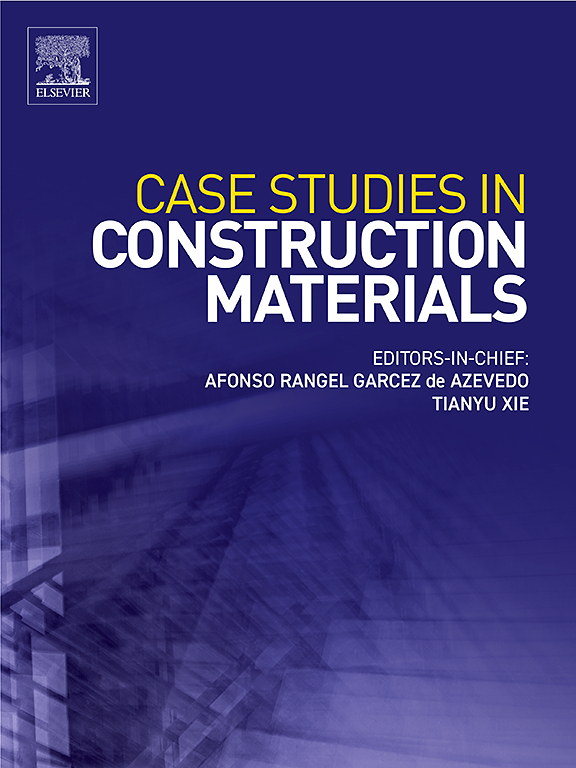地面住宅单元“TOVA”的生命周期评估:3D打印现场承重结构
IF 6.6
2区 工程技术
Q1 CONSTRUCTION & BUILDING TECHNOLOGY
引用次数: 0
摘要
本文旨在评估西班牙“TOVA”现场建造的真实含铅3D打印土基(3D - e)结构的环境生命周期。该方法采用从摇篮到现场的方法,重点关注墙体结构。对比了三种不同结构场景下的3d - e;传统的烧结砖结构,3d打印混凝土(3d - c)和3d - e(优化)。结果表明,在所有指标中,传统结构情景的影响最大。全球变暖表明,常规方法的结果最高,为12004.5 kg CO2 eq,而3d - e、3d - e (O)和3d - c的结果分别为264.759 kg CO2 eq、161.368 kg CO2 eq和592.995 kg CO2 eq。与3d - c相比,3d - e和3d - e(优化)的全球变暖环境增强效果分别为55 %和72 %,与传统技术相比,增强效果约为97 %。在运输碳排放方面,3d - e的运输碳排放比例最低,85% %的材料来自当地。与3d - c和传统方案不同,两者的最高比例都是100% %,所有材料都是进口的。本文强调了3d - e的潜力,通过减少建筑对环境的影响来提高可持续性。本文章由计算机程序翻译,如有差异,请以英文原文为准。
Life cycle assessment of earth-based residential unit “TOVA”: A 3D printed on-site load-bearing structure
This paper aims to assess the environmental life cycle of a real lead-bearing 3D printed earthen-based (3DP-E) structure built on-site, “TOVA” in Spain. The method followed a cradle-to-site approach focusing on wall structure. Three different structure scenarios are compared with the 3DP-E; conventional fired bricks construction, 3DP concrete (3DP-C), and 3DP-E (optimised). The results show that the conventional structure scenario is the highest impact in all the indicators. Global warming indicates the highest results in the conventional method than the 3DP methods with a value of 12004.5 kg CO2 eq, while 264.759 kg CO2 eq, 161.368 kg CO2 eq, and 592.995 kg CO2 eq, respectively for the 3DP-E, 3DP-E(O), and 3DP-C respectively. A significant environmental enhancement in global warming for 3DP-E and 3DP-E(optimized) are 55 % and 72 % respectively compared to 3DP-C, and around 97 % enhancement compared to the conventional technique. Regarding the carbon emission from transportation, 3DP-E recorded the lowest ratio from transportation, as 85 % of the materials were locally sourced from the site. Unlike the 3DP-C and conventional scenarios where both had the highest ratio of 100 %, where all the materials were imported. This paper contributes by highlighting the potential of 3DP-E to enhance sustainability by reducing the environmental impact of construction.
求助全文
通过发布文献求助,成功后即可免费获取论文全文。
去求助
来源期刊

Case Studies in Construction Materials
Multiple-
CiteScore
7.60
自引率
19.40%
发文量
842
审稿时长
63 days
期刊介绍:
Case Studies in Construction Materials provides a forum for the rapid publication of short, structured Case Studies on construction materials. In addition, the journal also publishes related Short Communications, Full length research article and Comprehensive review papers (by invitation).
The journal will provide an essential compendium of case studies for practicing engineers, designers, researchers and other practitioners who are interested in all aspects construction materials. The journal will publish new and novel case studies, but will also provide a forum for the publication of high quality descriptions of classic construction material problems and solutions.
 求助内容:
求助内容: 应助结果提醒方式:
应助结果提醒方式:


